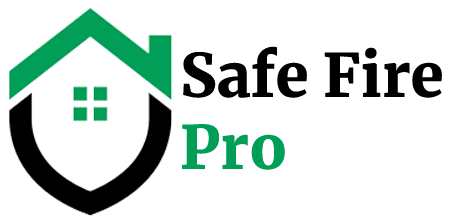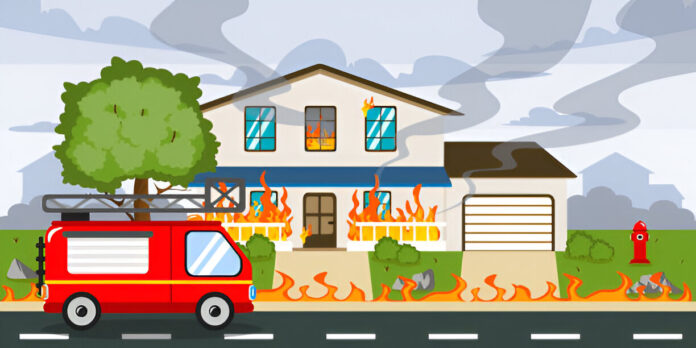Running a restaurant is not just about serving delicious meals and offering great customer service it’s also about protecting your business from unexpected disasters. Among the many risks, fire hazards are one of the most severe threats to any food business. From hot stoves and fryers to electrical wiring and flammable supplies, restaurants face a constant risk of fire. That’s why having fire insurance for restaurants is not just an option but a necessity.
In this comprehensive guide, we’ll explore everything restaurant owners need to know about fire insurance—from why it’s crucial, to what special coverages are available, and how to choose the best policy for long-term business protection.
This article is divided into three major parts:
-
Understanding Fire Insurance for Restaurants
-
Special Coverage Every Restaurant Owner Must Know
-
How to Choose, Claim, and Maximize Fire Insurance Benefits
Let’s dive in.
Understanding Fire Insurance for Restaurants
Why Fire Insurance is Crucial for Restaurants
Restaurants are uniquely vulnerable to fire compared to many other businesses. Consider these facts:
-
High fire risk equipment: Ovens, grills, fryers, and open flames are all part of daily operations.
-
Flammable materials: Cooking oils, alcohol, and wooden furniture increase fire hazards.
-
Tight working environment: A single mistake in a crowded kitchen can escalate quickly.
-
Late-night hours: Fires can occur after closing time, making them harder to detect early.
Without proper fire insurance for restaurants, one incident could wipe out years of investment. Insurance ensures that your property, equipment, staff, and even your income are protected in case of fire damage.
What Exactly Does Fire Insurance Cover?
Fire insurance for restaurants generally includes coverage for:
-
Building structure – walls, floors, roof, and physical premises.
-
Kitchen equipment – stoves, ovens, fryers, refrigerators, dishwashers, etc.
-
Furniture and interiors – tables, chairs, lighting, and décor.
-
Inventory and stock – raw ingredients, beverages, and supplies.
-
Loss of income – compensation for business interruption due to fire.
This coverage ensures that you’re not left paying massive repair costs out of pocket while your business is closed.
Case Study: A Small Fire, A Big Lesson
In 2022, a small family-owned restaurant in Texas suffered a grease fire in the kitchen. Though the fire was controlled within minutes, smoke damage ruined most of the kitchen equipment. Repairs cost over $80,000. Luckily, the owner had fire insurance that covered property damage and lost revenue during the two months of closure. Without insurance, the business would have gone bankrupt.
This shows why restaurant fire insurance is not a luxury—it’s survival.
Special Coverage Every Restaurant Owner Must Know
Basic fire insurance is good, but restaurants often need specialized coverage tailored to their unique risks. Here are the most important ones:
1️⃣ Business Interruption Insurance
After a fire, your restaurant may need weeks or months of repairs. During this time, you’ll lose revenue while still having to pay rent, salaries, and loans.
Business Interruption Insurance covers:
-
Lost income during closure
-
Fixed expenses (like rent and utilities)
-
Temporary relocation costs
This ensures financial stability until you reopen.
2️⃣ Equipment Breakdown Coverage
Kitchen appliances are expensive, and fire damage to a commercial fryer or oven could cost thousands. This coverage helps replace or repair damaged equipment quickly.
3️⃣ Contents and Inventory Coverage
Restaurants stock expensive inventory—wine collections, frozen goods, spices, and premium cuts of meat. A fire can destroy them instantly. This policy reimburses you for lost or damaged inventory.
4️⃣ Liability Coverage (Fire-Caused Injuries)
If a fire injures staff, customers, or even neighboring businesses, you could face lawsuits. Liability coverage protects you against legal claims and medical expenses.
5️⃣ Fire Sprinkler and Suppression System Coverage
If your sprinkler system is damaged during a fire or accidentally triggered, insurance can cover replacement and water damage.
6️⃣ Outdoor Property Coverage
Restaurants often have outdoor seating, signboards, or garden spaces. Fires can damage these too, and many owners forget to cover them.
7️⃣ Cyber Coverage (Hidden but Important)
Why cyber insurance in a fire policy? Because many restaurant systems—POS (Point of Sale), reservations, delivery apps—are digital. Fire damage to servers or data systems can paralyze operations. Cyber add-ons can protect your digital operations as well.
How to Choose, Claim, and Maximize Fire Insurance Benefits
How to Choose the Right Fire Insurance Policy
When shopping for fire insurance for restaurants, consider these steps:
-
Assess your risk level – How large is your kitchen? How old is the wiring? Do you serve alcohol (which raises fire risks)?
-
Estimate property value – Calculate the cost of rebuilding and replacing everything.
-
Compare policies – Look beyond price. Focus on coverage limits, exclusions, and add-ons.
-
Check insurer reputation – Read reviews about claim settlement speed and customer support.
-
Bundle policies if possible – Some insurers offer discounts if you combine fire, liability, and workers’ compensation insurance.
Common Mistakes to Avoid
-
Underestimating coverage needs (choosing too low a limit).
-
Ignoring business interruption coverage.
-
Failing to update policies as your restaurant expands.
-
Not reading exclusions carefully (some policies exclude grease fires unless special coverage is added).
How to File a Fire Insurance Claim (Step by Step)
-
Report the incident immediately to your insurer.
-
Document damages – take photos and videos.
-
File a police/fire department report.
-
Prepare proof of loss – receipts, invoices, and inventory records.
-
Work with adjusters to estimate losses.
-
Stay compliant with safety regulations to avoid denial.
Tips to Maximize Your Fire Insurance Benefits
-
Install fire alarms, sprinklers, and extinguishers (may lower premiums).
-
Train staff on fire safety protocols.
-
Keep records of all restaurant assets and equipment.
-
Review and update your policy yearly.
Frequently Asked Questions (FAQs)
Q1: Is fire insurance mandatory for restaurants?
Not legally mandatory in most places, but highly recommended since landlords, banks, or franchisors often require it.
Q2: Does fire insurance cover electrical fires in restaurants?
Yes, but you must check if your policy includes electrical wiring coverage.
Q3: How much does fire insurance for restaurants cost?
Premiums vary based on location, restaurant size, equipment, and risk profile. On average, small restaurants may pay $1,000–$3,000 annually.
Q4: Can I get coverage for fire caused by negligence?
Most policies exclude intentional or gross negligence, but accidental negligence (like forgetting oil on a stove) is usually covered.
Q5: Does fire insurance cover delivery kitchens or cloud kitchens?
Yes, as long as they are registered businesses and included in the policy.
Final Thoughts
A restaurant is more than just a business—it’s a dream, a livelihood, and a community hub. But one fire can destroy it all in minutes. That’s why investing in fire insurance for restaurants is not optional, it’s essential.
By securing the right coverage—property, equipment, liability, and business interruption—you protect not just your assets but also your future.
Whether you run a cozy café, a family diner, or a fine-dining restaurant, make sure fire insurance is a top priority. Because when it comes to restaurant safety, prevention is good but protection is everything.
References & Sources
-
National Fire Protection Association (NFPA) – “Structure Fires in Eating and Drinking Establishments” (latest U.S. data on restaurant fires)
👉 https://www.nfpa.org -
U.S. Small Business Administration (SBA) – Disaster Preparedness for Small Businesses, including fire insurance guidelines.
👉 https://www.sba.gov -
Insurance Information Institute (III) – Business insurance coverage types, fire insurance explained.
👉 https://www.iii.org -
Occupational Safety and Health Administration (OSHA) – Restaurant fire safety standards and prevention measures.
👉 https://www.osha.gov -
Federal Emergency Management Agency (FEMA) – Fire prevention and recovery planning for businesses.
👉 https://www.fema.gov -
Allianz Global Corporate & Specialty (AGCS) Reports – Risk management insights for hospitality and restaurants.
👉 https://www.agcs.allianz.com -
Restaurant Facility Management Association (RFMA) – Fire safety and insurance insights for restaurant operators.
👉 https://www.rfmaonline.com -
Local Insurance Brokers’ Blogs – Many provide state-specific or country-specific fire insurance breakdowns (useful for tailoring content by region).

